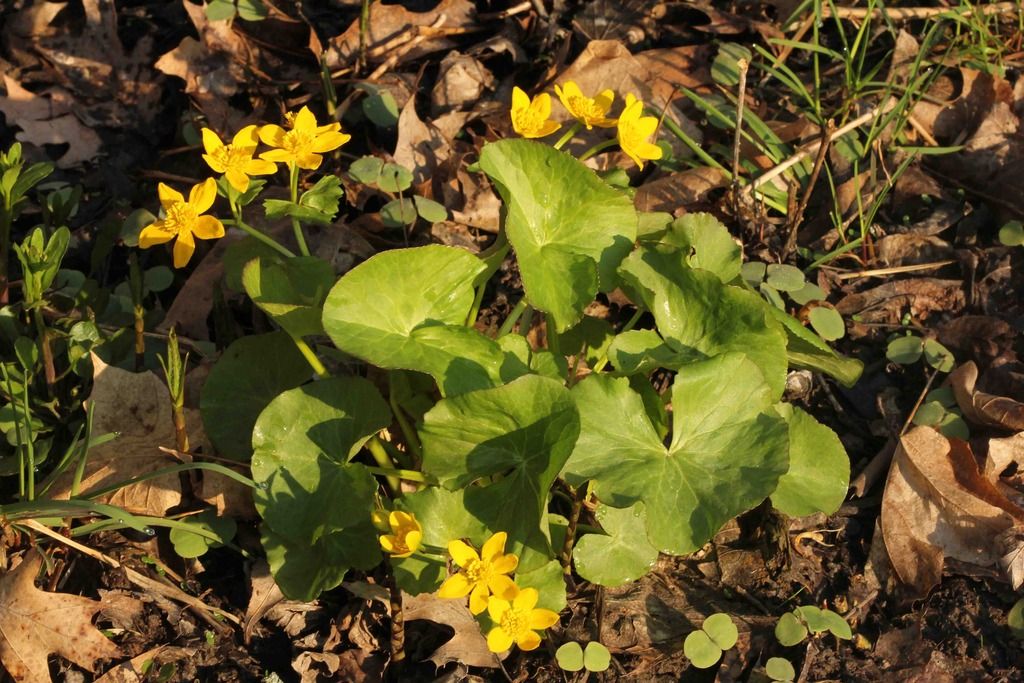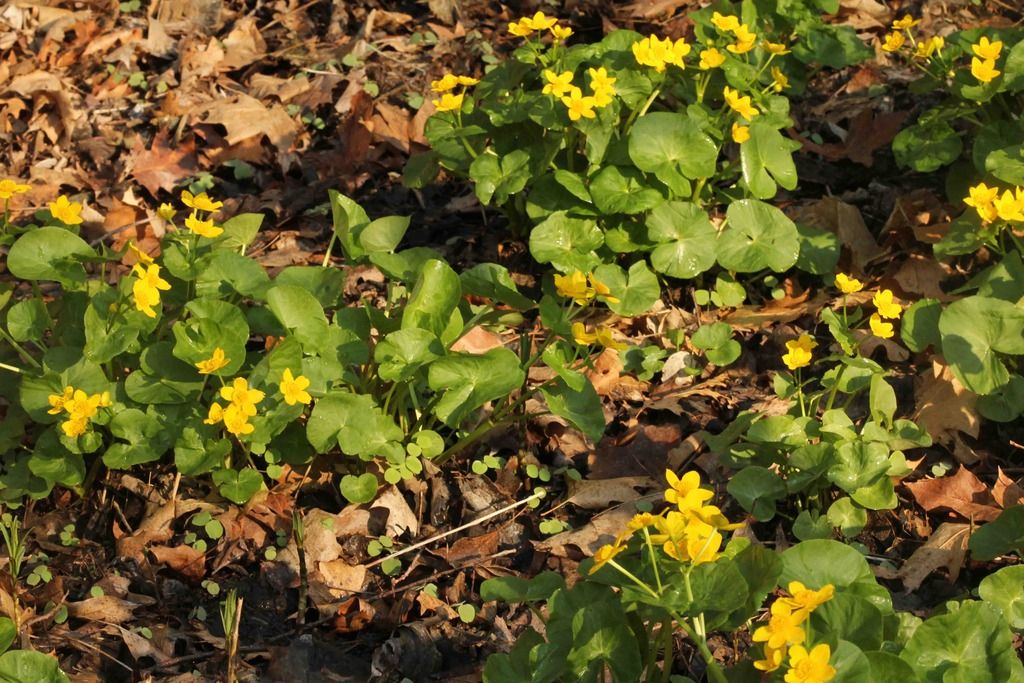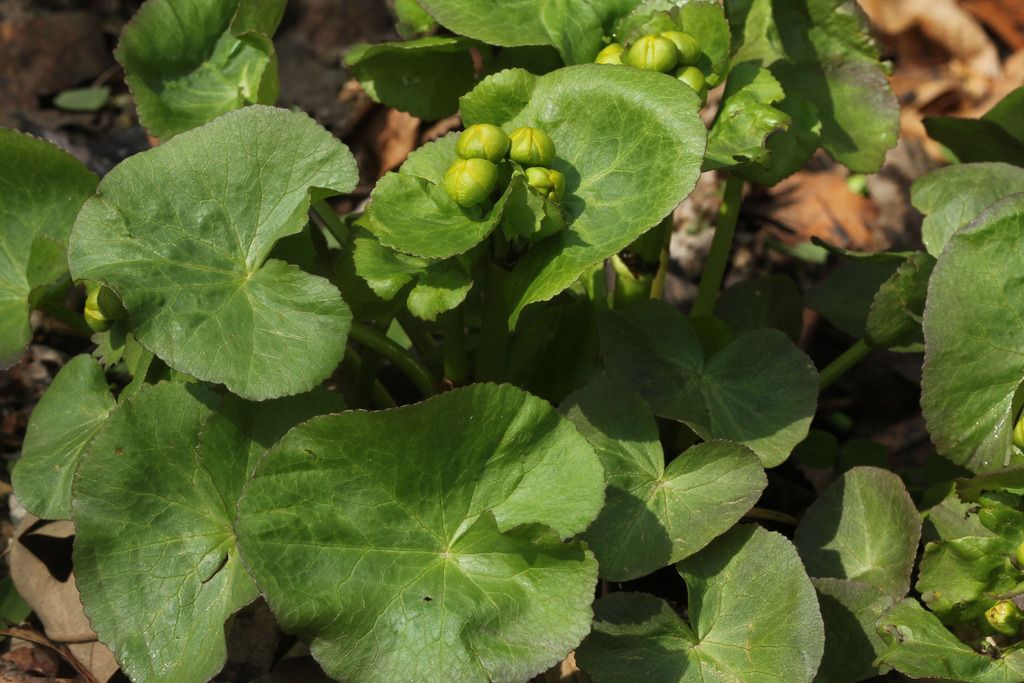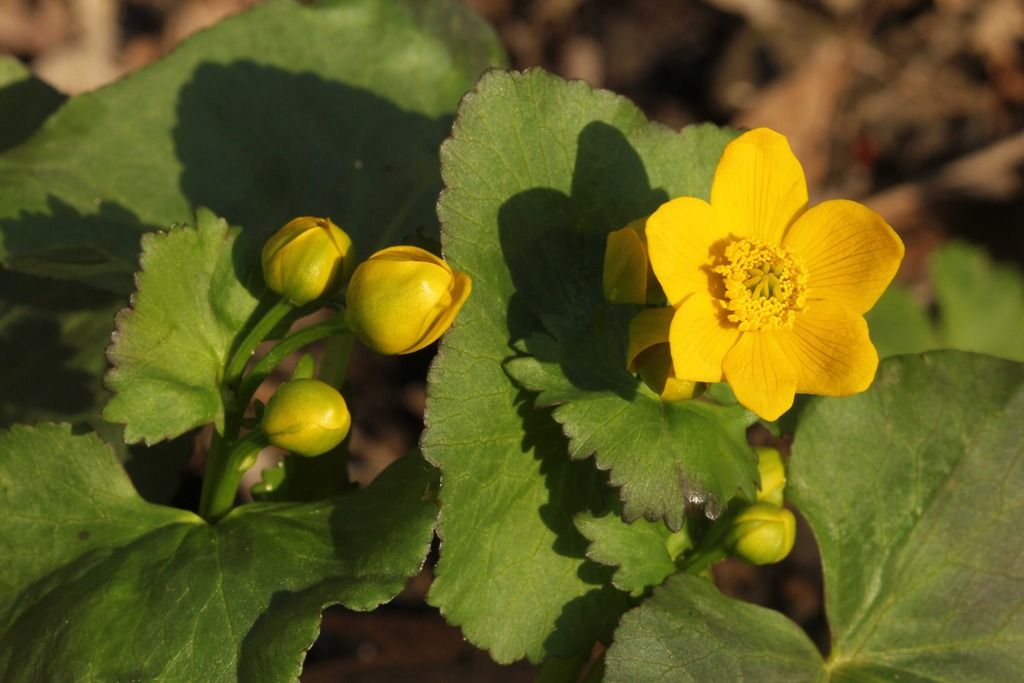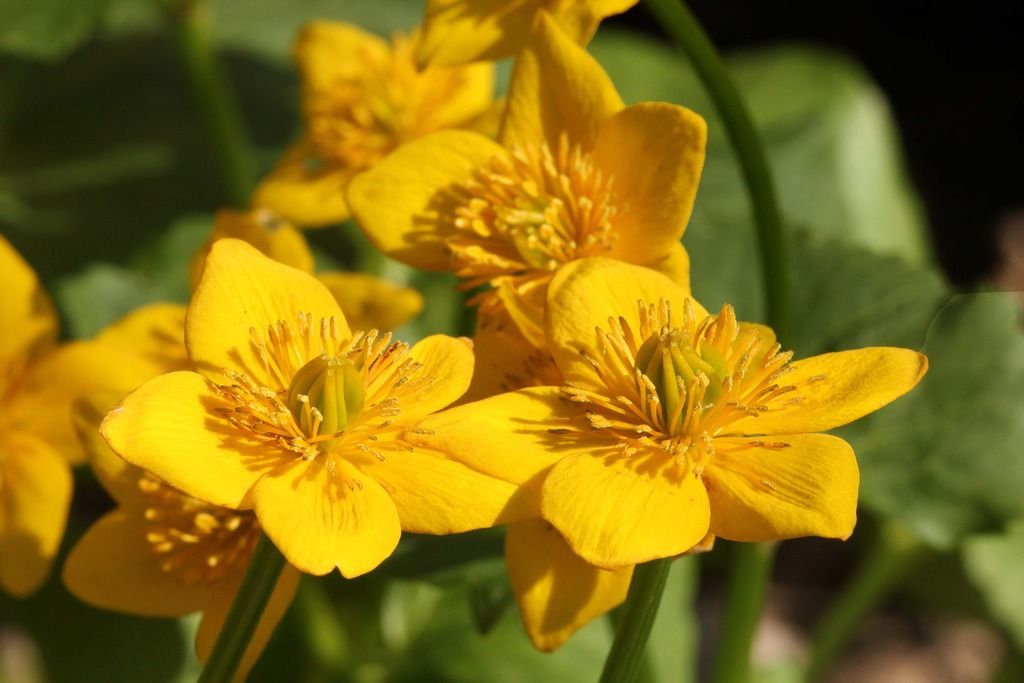Today’s featured native plant is relatively rare and found mainly in wetlands. The naturalist and photographer Eileen Miller showed me a large stand of Marsh marigold on a recent visit to Dolliver Memorial State Park (Webster County), a beautiful area with some historically significant sites. Eileen contributed the photographs and text about these bright yellow flowers, which I’ve enclosed below.
Many spring wildflowers are peaking in central Iowa. A few days ago, my kids and I went out to pull up garlic mustard (an invasive plant) and saw all of the following native plants in bloom within a wooded area of less than an acre: spring beauty, Dutchman’s breeches, sweet William (blue phlox), sweet cicely, littleleaf crowfoot or buttercup, Virginia bluebells, spring beauty, toothwort, rue anemone, bellwort, violets, and Jack-in-the-pulpit.
MARSH MARIGOLD (Caltha Palustris)
By Eileen Miller
The glossy yellow flowers (up to 1 1/2 inches across) of Marsh Marigold, (buttercup family-Ranunculaceae), begin blooming in early to mid April. Marsh Marigold is a native wildflower that thrives in wet soils of marshes, seeps and stream edges, so if you want to get up close to these flowers, you will get wet feet.
These flowers have no petals, but rather 5-9 colorful sepals. The waxy yellow surface of the sepals reflects ultraviolet light which bees can detect. The UV light serves as a nectar guide to bees.
In the center of the flowers are numerous greenish yellow pistils (female) surrounded by many yellow anthers (male). The fruit is a papery pod containing the seeds.
After the flowers and seeds are gone the leaves enlarge and manufacture food by photosynthesis to store for the growth of new shoots the following year.
Marsh Marigold is one of the spring flowers that sometimes blooms again in the fall.
The young leaves of this plant are edible, only if boiled in several changes of water to remove the toxic alkaloids. Never should one eat any part of this plant raw. Its plant juices can cause blistering or inflammation on skin and mucous membranes. If eaten it can cause gastric illness.
These two photos show how marsh marigold grow in clusters.
Leaves and early flower buds.
Opening of the buds and a full flower.
The fruit/seed pods are beginning to develop.

